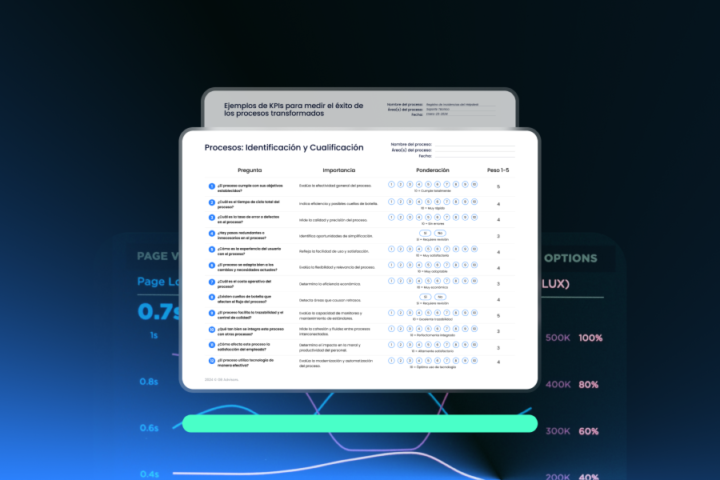 Risk assessment is one of the fundamental steps in any strategic planning related to the security of companies’ IT systems. However, despite its relevance, there are many cases of organizations that do not carry it out consistently; or do not apply it correctly. Either because they do not know the procedure or because they do not give it the importance it deserves.
Risk assessment is one of the fundamental steps in any strategic planning related to the security of companies’ IT systems. However, despite its relevance, there are many cases of organizations that do not carry it out consistently; or do not apply it correctly. Either because they do not know the procedure or because they do not give it the importance it deserves.
Conducting a proper risk assessment can be a major challenge for some security teams. That’s why to help you develop a safer digital environment within your organization, we’ve decided to bring you these best practices linked to risk assessment. Read on and find out more.
What is a risk assessment?
A risk assessment is a process focused on conducting an in-depth analysis of the real risks associated with IT systems, to help companies develop robust security strategies tailored to their particular needs.
It is a structured and methodological approach, which analyses the human, organizational and technical aspects of the organization The main objectives of risk analysis are
- In general, improving the security of information systems
- Justify the budget allocated to IT security.
- Demonstrate the level of IT protection.
- Identify vulnerabilities and map real risks.
- Calculate the cost of incidences and, therefore, measure the cost of insecurity.
- Define protection requirements.
- Design a protection strategy by planning actions and budgets.

A risk assessment uses resources such as statistical studies, the probability of occurrence metrics and impact assessment to determine the level of sensitivity and/or criticality of the assets. In this way, organizations can prioritize assets and establish adequate measures for the treatment of risks. That is to say, it is able to determine if :
- It is worth assuming the costs of risk treatment compared to its severity.
- It is necessary that the responsibility for dealing with the risk be transferred to a third party
- (insurer, partner, supplier or client) who can resolve it more effectively.
- The organization must apply emergency security measures in order to reduce the probability of
- occurrence and/or the impact of a major risk.
Risk assessment has 5 stages:
1) Context study
In this step, the security teams must identify which system is the objective of the study. Here they define the scope of the study and analyse data such as the particular characteristics of the company, IT system architecture, technical and regulatory constraints, business issues, equipment details, software, and human component.
2) Expression of security needs
At this stage, the risk criteria are defined. During this stage, IT users express their security needs according to the impacts they find unacceptable.
3) Threat Study
It allows security teams to identify risks, no longer on the basis of user needs, but on the basis of the technical architecture of the information system. Thus, the list of vulnerabilities and types of attacks is established according to the hardware, the network architecture and the software used.
4) Identification of security objectives
Compares expressed security needs and identified threats to highlight the risks against which the system must be protected. These objectives will constitute a security specification that reflects the choice of the level of resistance to the threats based on the security requirements.
5) Prioritization of risks
 It is clear that a company cannot cope with all kinds of risks. Either because they are too small to pay attention to or because the cost of eliminating them is too high. In this case, it is the risk analysis strategy that will define whether risk should be accepted, reduced or rejected. These decisions are made on the basis of the cost of the consequences of the risk and its probability of occurrence.
It is clear that a company cannot cope with all kinds of risks. Either because they are too small to pay attention to or because the cost of eliminating them is too high. In this case, it is the risk analysis strategy that will define whether risk should be accepted, reduced or rejected. These decisions are made on the basis of the cost of the consequences of the risk and its probability of occurrence.
Risk Assessment: Best Practices
#1 Keep your CMDB always up to date
The database of all your company’s assets represents a fundamental resource when carrying out a risk assessment. Unfortunately, it is often tedious to identify all these elements, especially if you are a large company. So try to create and keep your CMDB up to date to save time at the recognition stage.
#2 Standardize the process

The first time you perform a risk assessment, you may find that some steps you took were incomplete or unnecessary. Take advantage of this experience to adapt this process to the needs and characteristics of your company and create a standardized strategy that you can apply in the future whenever you need it.
#3 Involve all members of the company
It is important that the entire human component of your company participates in the risk assessment process. Regardless of their expertise in the field, they are all capable of providing valuable information when it comes to identifying and prioritizing risks. So don’t hesitate to include them, even briefly.
Finally, don’t forget that any security strategy must be backed by the right tools. So rely on solutions like BeyondTrust to help you protect your systems more simply.
Want more information? Contact us now for advice from ITSM and ITsec experts. At GB Advisors we help you keep your systems totally safe.



